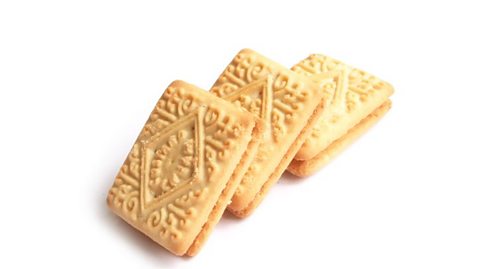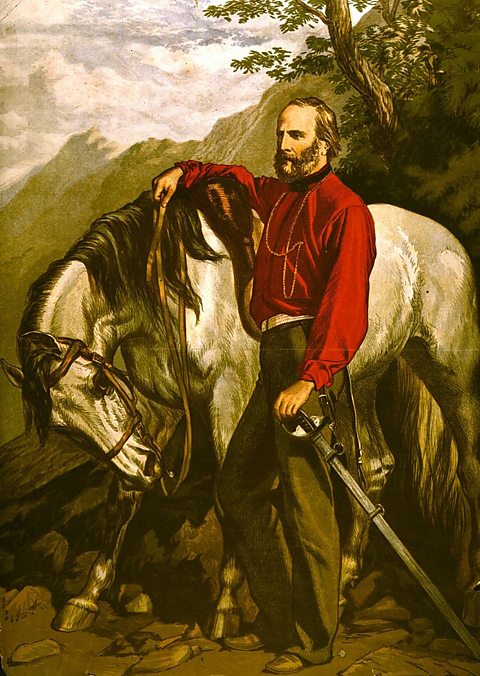You can nibble them, you can dunk them, you can even arrange them nicely on a plate for visitors. WeÔÇÖre talking about biscuits, of course.
When youÔÇÖre tucking in to one of your favourite buttery treats, youÔÇÖre also tasting a tiny bit of history. ┤¾¤¾┤½├¢ Bitesize sat down with food historian and author Lizzie Collingham to unwrap the stories behind our favourite accompaniment to a nice cuppa.
How the custard cream reflected a trend for greenery
If youÔÇÖre not too peckish, next time you have a custard cream, take a look at the design before taking your first bite. ThereÔÇÖs a good chance youÔÇÖll spot an intricate design of straight lines and swirls.
ItÔÇÖs very pretty and not there by accident, either. Lizzie said: ÔÇ£Ferns were very fashionable in Victorian England. People would have little glass cases and grow ferns in them, sometimes in the shape of churches. It was a terribly fashionable pastime for ladies.ÔÇØ The design on top of the custard cream is perhaps a reflection of that trend, known as A craze for anything related to ferns which swept Victorian Britain from the 1840s to 1890s. The name comes from 'pterido', the Latin word for fern., but Lizzie believes the biscuit also represents a key moment in the industrialisation taking hold in Britain in the late 19th and early 20th Centuries.

She explained her theory: Custard powder was made by a chemist, Alfred Bird, whose wife was allergic to eggs. It was seen as a modern, exciting thing to make a food. Biscuits were the first industrial food, the first food stuff to be produced by a machine; form mixing, kneading, rolling out, cutting out, baking, it could all be done with minimal intervention from people. To put custard powder in a biscuit it brought together two things which represented industrial progress.
The exact date for the invention of the custard cream is unclear. Some sources say they first appeared in 1908, others state 1913, but - interestingly - both given years are long after the Victorian era and its passion for ferns. It didnÔÇÖt seem to take long for the biscuit to capture peopleÔÇÖs hearts; an advertisement for Peek Freans from 1920 states the custard cream is: ÔÇ£Far and away the most popular of all the cream sandwich biscuits.ÔÇØ

Garibaldi biscuits and an Italian freedom fighter
Sometimes called a ÔÇÿsquashed flyÔÇÖ biscuit, these dried fruit favourites date all the way back to the 1861, the year which also saw the unification of Italy.
One of the heroes of that time in Italian history was Giuseppe Garibaldi, who - together with his army, known as Red Shirts due to their distinctive clothes, led a conquest of Sicily and Naples which helped achieve unification in his homeland. When he came to Britain in 1864, Garibaldi was treated as a hero. ÔÇ£He was popular with the working classes,ÔÇØ Lizzie said, ÔÇ£as he believed everybody should have the vote. He was also popular with the middle and upper classes for standing up to the Bourbon and Habsburg households [two royal families based in mainland Europe].ÔÇØ
Such was the love for Garibaldi, when Nottingham Forest football club formed in 1865, they decided to play in the same shade of red as that worn by the peopleÔÇÖs hero and his men.
In 1861, Jonathan Dodgson Carr invented a biscuit for Peek Freans consisting of currants sandwiched between a pair of crispy layers, one we know today as the Garibaldi. It is a little unclear what the link was between the biscuit and the man himself, although theories include a tribute to the way the Redshirts ate bread and berries when their supplies ran low. Another is that Carr simply named the biscuit after a very popular man in a clever piece of marketing.

A digestive a day keeps the doctor away?
In her research, Lizzie discovered a cookery book containing a biscuit recipe from 1492. It was a translation from an Italian book that saw food as being close to medicine, with the body needing to balance out the four humours.
To help aid digestion, small biscuits were served in the court in Naples which could be dipped into wine. This tradition moved over to the British court in time, where the caraway seed was a popular ingredient in biscuits as they helped tackle ÔÇÿwindy cholicÔÇÖ - caraway seed biscuits even get a mention in Charles DickensÔÇÖ The Pickwick Papers in 1836.

In 1892, Alexander Grant developed a recipe for a digestive biscuit for the McVities company in Scotland. Although there had been other digestive biscuits before it, this was the one that still sells in its millions today. It contained the relatively new invention bicarbonate of soda. It was advertised as being good for digestion and helpful to people who werenÔÇÖt feeling so well. Bicarbonate of soda is one of the elements of the digestive juice produced by the pancreas. It is an alkali, so reduces the acidity of the stomach acid that has been mixing in with food.
Although the original biscuit was advertised as having health benefits - and the exact McVities recipe remains a secret to this day - by 1925, the digestive had also become something of a treat. That was the year a layer of chocolate appeared on the biscuit for the first time - but is it on the top of the digestive, or the bottom? The debate continues to this day.
This article was first published in May 2022.
Cake Britain: Eight traditional treats from around the UK
Ever made Fifteens in a fridge, or tried a slice of Selkirk bannock?

Myth-busting food origin stories
Chocolate chip cookies, crisps and Caesar salad all have legendary histories, but are they true?

A brief history of chocolate
It's delicious, but where does it come from?
